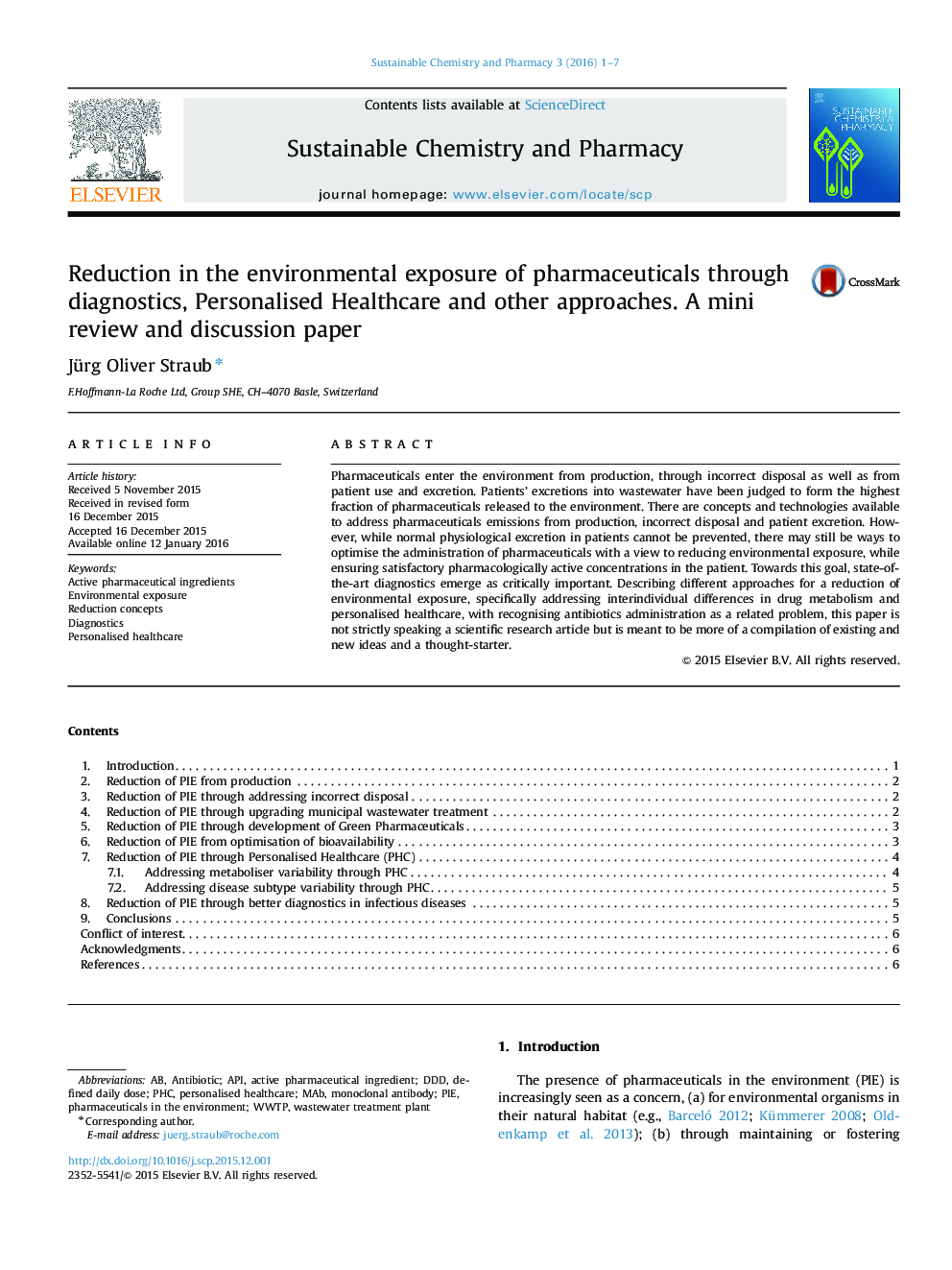| Article ID | Journal | Published Year | Pages | File Type |
|---|---|---|---|---|
| 4434497 | Sustainable Chemistry and Pharmacy | 2016 | 7 Pages |
Abstract
Pharmaceuticals enter the environment from production, through incorrect disposal as well as from patient use and excretion. Patients' excretions into wastewater have been judged to form the highest fraction of pharmaceuticals released to the environment. There are concepts and technologies available to address pharmaceuticals emissions from production, incorrect disposal and patient excretion. However, while normal physiological excretion in patients cannot be prevented, there may still be ways to optimise the administration of pharmaceuticals with a view to reducing environmental exposure, while ensuring satisfactory pharmacologically active concentrations in the patient. Towards this goal, state-of-the-art diagnostics emerge as critically important. Describing different approaches for a reduction of environmental exposure, specifically addressing interindividual differences in drug metabolism and personalised healthcare, with recognising antibiotics administration as a related problem, this paper is not strictly speaking a scientific research article but is meant to be more of a compilation of existing and new ideas and a thought-starter.
Keywords
Related Topics
Life Sciences
Environmental Science
Environmental Chemistry
Authors
Jürg Oliver Straub,
